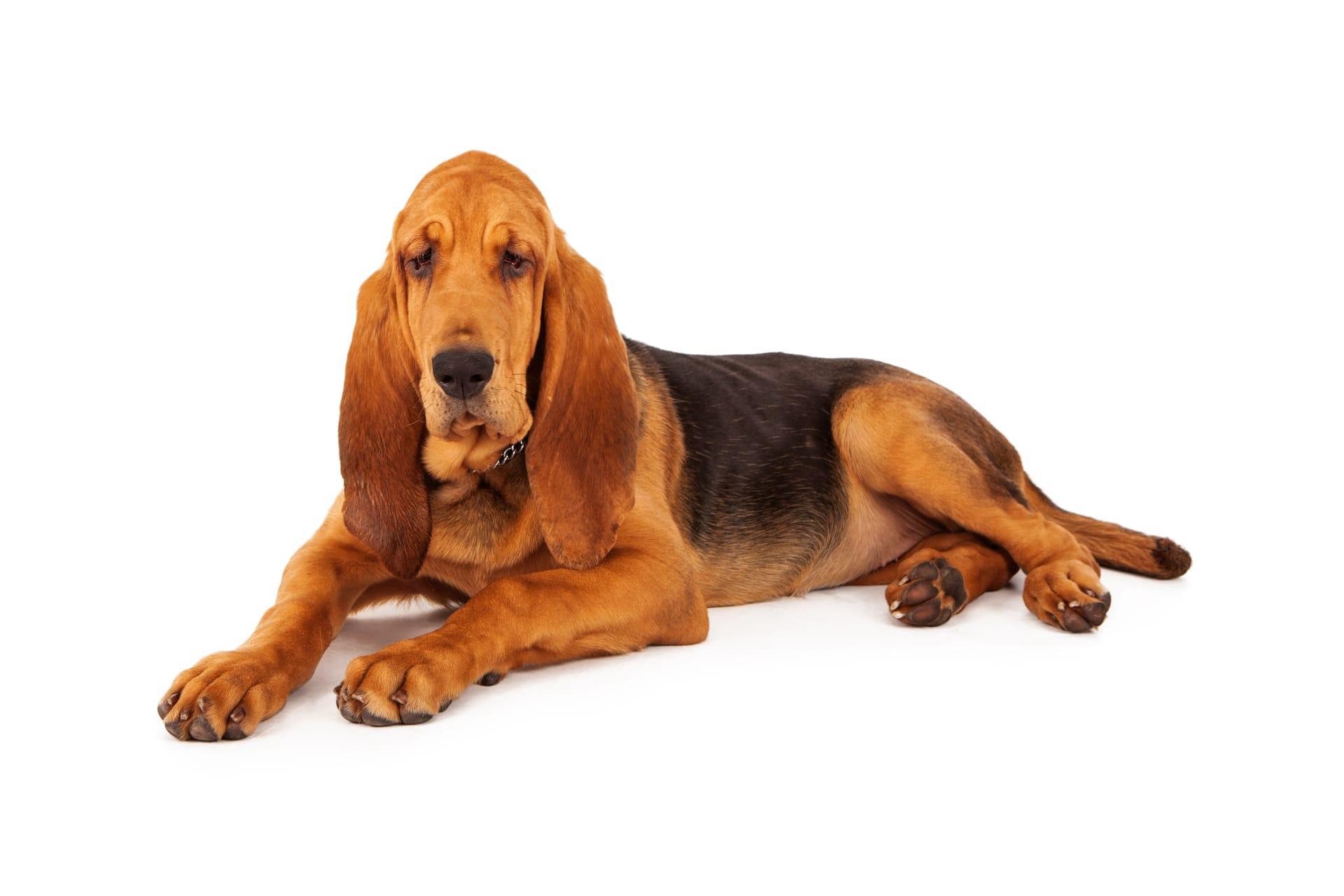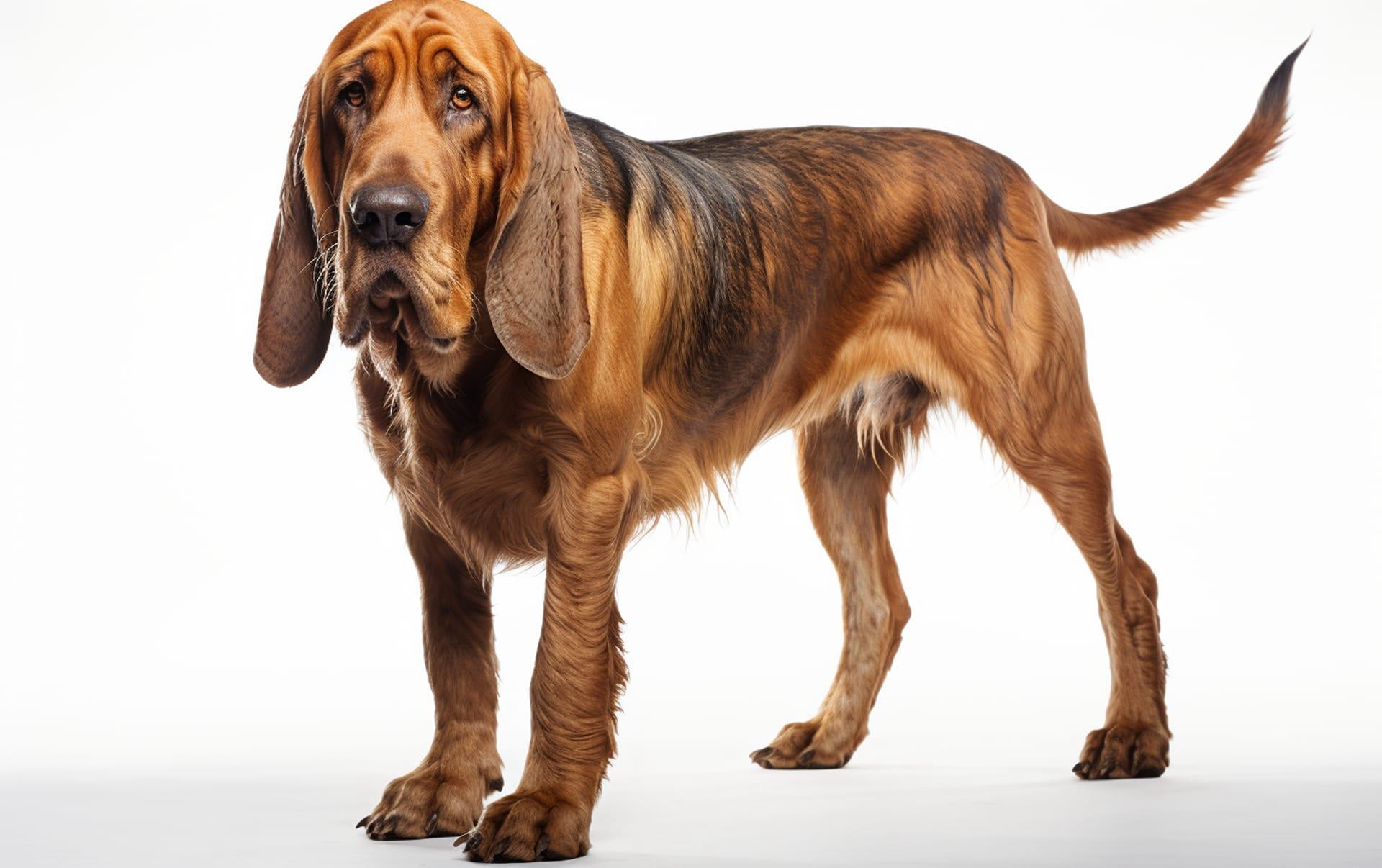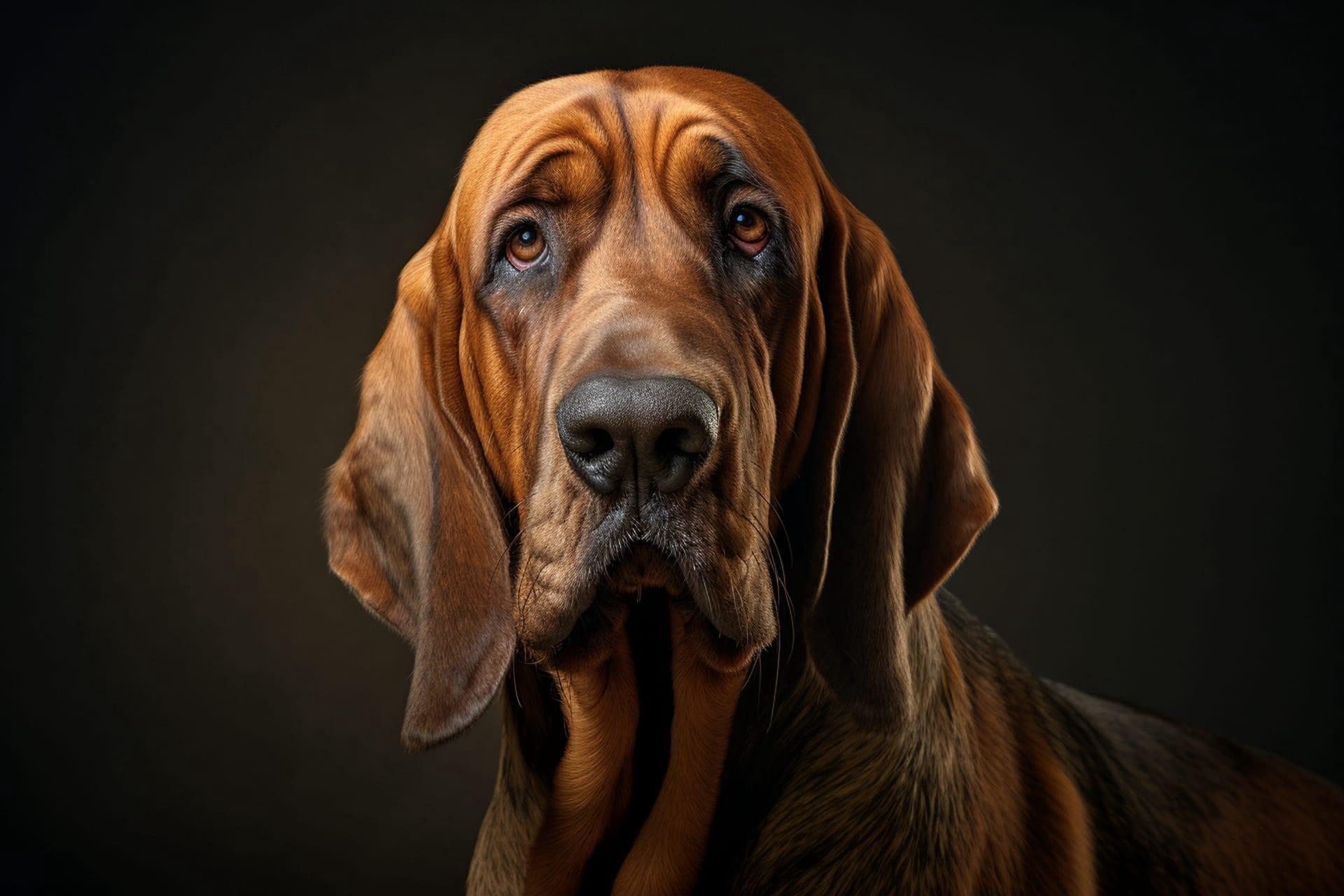Bloodhound
- Home /
- Mini Encyclopedia /
- Animal /
- Bloodhound
1
The Bloodhound belongs to the Canidae family, specifically classified under the genus Canis, species C. lupus, and the subspecies C. l. familiaris, indicating its domestication from the wolf. Recognized for its keen sense of smell, the Bloodhound is distinguished by its sagging skin and long, droopy ears which enhance its scent tracking ability. This breed stands 23 to 27 inches tall at the shoulder and weighs between 80 to 110 pounds, showcasing a sturdy build ideal for endurance over long distances.
Bloodhounds are found across various continents but are predominantly distributed in Western Europe and North America. Initially bred in medieval France and Belgium for tracking deer and boar, they are now widely utilized in search and rescue operations as well as in law enforcement to track missing persons or fugitives. Their adaptability to different terrains and climates has facilitated their distribution, making them a valuable asset in both rural and urban settings.

2
A common misconception about Bloodhounds is that they are aggressive due to their size and historical use in tracking. Many believe that these dogs are primarily used to hunt humans aggressively.
In reality, Bloodhounds are incredibly gentle and friendly. They are known for their patience and good nature, making them excellent family pets. Their tracking ability is used for search and rescue missions and law enforcement but in a non-aggressive manner. Bloodhounds track scent without the intent to harm, focusing on finding rather than attacking their target.

3
The relationship between Bloodhounds and humans spans several centuries, initially bred for hunting purposes due to their exceptional tracking abilities. Over time, this relationship has evolved, with Bloodhounds now playing a crucial role in search and rescue operations, as well as in law enforcement. Their ability to follow a scent trail for miles makes them invaluable in searching for missing persons or fugitives, often leading to successful recoveries where other methods fail.
Beyond their working roles, Bloodhounds have become beloved companions, appreciated for their loyalty, affection, and gentle temperament. They thrive on human interaction and are known to form strong bonds with their owners. This deep connection, combined with their distinctive appearance and friendly nature, has made Bloodhounds a popular choice among dog enthusiasts around the world.

4
The origin of the Bloodhound can be traced back to medieval Europe, specifically to France and Belgium, around the 7th century. They were initially bred by monks in monasteries for hunting deer and boar, thanks to their keen sense of smell. Their name, "Bloodhound," originates from the term "blooded hound," referring to their noble bloodline and pure breeding by these monks.
Throughout the centuries, Bloodhounds have undergone evolution in their breeding and use. From the hunting fields of medieval Europe to modern-day search and rescue, their role has significantly changed. In the 19th century, Bloodhounds were introduced to the United States, where they were further bred for tracking. This evolution has seen the Bloodhound become more refined in appearance and even more skilled in scent tracking, cementing their status as one of the premier tracking dogs in the world.

5
Film: "The Incredible Bloodhound: The Scent of Justice" is a documentary produced in the United States in 2018. It explores the remarkable abilities of Bloodhounds in law enforcement and search and rescue operations. Through interviews and real-life footage, it showcases how these dogs are trained and work alongside humans to solve crimes and find missing persons, highlighting their incredible sense of smell and dedication.
Book: "The Bloodhound: Tracking by Scent" is a comprehensive guide published in the United Kingdom in 2015 by author John Reynolds. It delves into the history, training, and care of Bloodhounds, offering insights into their psychological and physiological aspects that make them exceptional trackers. Reynolds combines scientific research with practical advice, making it an invaluable resource for both professionals and enthusiasts.
Book: "Scent of a Bloodhound: The Science and Mystery Behind the World's Best Trackers" was released in the United States in 2020 by Sarah Hodgson. This book explores the fascinating world of Bloodhounds, from their evolution and history to the modern-day applications of their tracking abilities. Hodgson provides a captivating look at how these dogs work, their training processes, and the science behind their extraordinary sense of smell, making it accessible to a wide audience interested in canine capabilities.